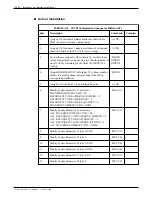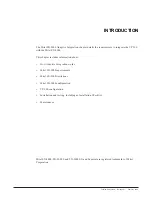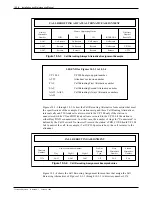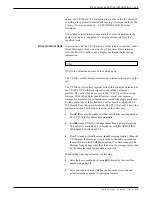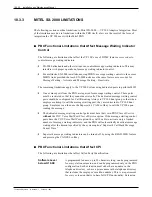
for busy/DND and ring-no-answer. Rerouting also can be enabled or disabled
independently for different types of call sources (DID trunk, TIE trunk, CO trunk, or on
internal extensions). In any of these cases, rerouting is specified as Normal, in which case
the call uses normal rerouting; This, in which case the call uses the specified First
Alternative answer point; or Last, in which case the call uses the rerouting specified in the
Call Rerouting Second Alternative answer point.
A Call Rerouting Second Alternative specifies the alternate answer point to which a call is
to be rerouted if the call cannot be completed according to the First Alternative. Rerouting
to the second alternative answer point can be enabled or disabled for different call sources
(DID trunk, TIE trunk, CO trunk, or internal), but busy/DND and ring-no-answer cannot be
specified independently. Rerouting is specified as Normal, in which case the call uses
normal rerouting; or This or Last, in which case the call uses the rerouting specified in the
Call Rerouting Second Alternative answer point.
A Call Rerouting Always Alternative specifies as an alternate answer point that all calls are
to be rerouted. Rerouting can be enabled or disabled for different types of call sources
(DID trunk, TIE trunk, CO trunk, or internal).
The Call Rerouting Assignment Table assigns Call Rerouting alternatives to each directory
number in the SX-2000. Each directory number is always assigned a First Alternative and a
Call Rerouting Second Alternative. Assignment of Call Rerouting Always Alternatives is
optional, but each directory number may use different Always Alternative for Day, Night 1,
and Night 2 operation. The Call Rerouting Assignment Table also assigns the type of Do
Not Disturb to be used for each directory number. Do Not Disturb may be selected for
internal calls only, for external calls only, or for all calls, including calls from an attendant.
Calls reroute to an alternative answer point immediately if the preferred answer point is
busy or in DND, but Call Rerouting on ring-no-answer is governed by two timers. The Call
Forward No Answer Timer, an SX-2000 COS option, determines how long a call will ring
at the called extension before rerouting to the First Alternative answer point. The Call
Rerouting Timer, an SX-2000 System Option, determines the maximum duration from the
start of the call before the call reroutes to the Second Alternative answer point.
The Call Rerouting Timer should be set longer than the longest value used for the Call
Forward No Answer Timer, but shorter than the sum of any two values for the Call
Forward No Answer Timer. This gives the Call Rerouting First Alternative answer point
time to answer a RNA-forwarded call before the call reroutes to the Second Alternative
answer point, and ensures that the call will reroute to the Second Alternative answer point
before it can forward elsewhere from the First Alternative answer point.
Call Rerouting is the recommended means for VP 300 call coverage using CPI since it is
defined centrally in the PBX configuration and its operation is transparent to the individual
using the extension. Call Rerouting provides flexibility in assigning the VP 300 call
coverage. This feature should be applied carefully. Some questions to ask when specifying
Call Rerouting that includes the VP 300 are:
•
Under what calling conditions (e.g., busy, DND, RNA) should calls be forwarded to
the VP 300?
•
Which type of Call Rerouting alternative should be used to forward calls to the VP
300?
Toshiba VP Systems
Release 6.1
February, 1993
10.3-4
Installation and Maintenance Manual
Summary of Contents for VP 300
Page 2: ......
Page 10: ......
Page 14: ......
Page 20: ...Toshiba VP Systems Release 7 1 July 1994 ...
Page 52: ...Toshiba VP Systems Release 6 1 February 1993 2 14 Installation and Maintenance Manual ...
Page 56: ...Toshiba VP Systems Release 7 1 July 1994 ...
Page 146: ......
Page 312: ...Toshiba VP Systems Release 7 1 July 1994 ...
Page 314: ......
Page 444: ......
Page 496: ......
Page 542: ......
Page 598: ...Toshiba VP Systems Release 6 1 February 1993 ...
Page 600: ...Toshiba VP Systems Release 6 1 February 1993 ...





